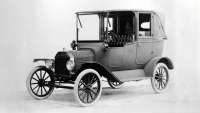Where to put L plates on a car in Australia?
L plates must be displayed on the front and rear of a vehicle in a way that is easily visible for other drivers.
Some states/territories insist that your L plates must be positioned on the outside of the vehicle, but some are okay if your L plates are inside the vehicle, as long as they are clearly visible to other drivers from the front or rear.
Here’s a state by state/territory breakdown of where to put L plates on a car so you abide by the law and you avoid copping a fine.
ACT
ACT Policing states: “‘L’ plates must be displayed on the front and rear of a vehicle in a way that is easily visible for other drivers.
“Plates should be the correct size [155mm by 155mm in the ACT] and colour and the letter on the plate should be fully visible.
Where to display L plates? “It’s important to select the most visible display option for your vehicle,” ACT Policing said. Good spots are on an external panel at the front and rear of the vehicle or fastened to the registration plate, without obscuring that plate at all and ensuring that the ‘L’ on the learner plate is completely visible.
So, can you put L plates in the window? “You can use plates specifically designed for display in the front or rear windscreen," ACT Policing said.
“However, a slanted windscreen is not suitable for displaying plates as the plate will face up, towards the sky, and won’t be easily visible to other drivers from the front and rear."
How to put L plates on a car? Where to put L sticker on car?
“Other options, such as magnetic plates, plate display brackets and plate clips are also available to drivers,” ACT Policing said.
The ACT Road Rules Handbook clarifies the “easily visible” description by stating: “‘L’ plates are not clearly visible if they are placed, for example, behind wiper arms, behind rear louvres or inside tinted windows.”
In the ACT a “Fail to display ‘L’ plates on car as required” offence may attract a $208 fine, but no demerit points.
New South Wales
Where to put L plates? Transport NSW states: “You must clearly display your L plates on the front and back of the outside of your vehicle – the letters must not be hidden.”
The NSW government expands on that explanation, by stating: “When driving, learners must display L plates clearly on the front and back of the car.
“The plates must be on the outside, or there must be an L sign on the roof.
“The letter L on the plate must not be hidden.
“So your plates do not fall off, secure them with a clip or holder.”
In NSW a “Fail to display ‘L’ plates on car as required” attracts a $272 fine and two demerit points.
Northern Territory
How to display L plates? “L plates [150mm by 150mm and consisting of a black letter ‘L’ against a yellow background) must be clearly displayed on the front and back of the vehicle.
Northern Territory Police Force said: “The L plates must be easily seen by other road users and must not block or obscure the driver’s view.
“It is recommended that L plates are displayed vertically on the vehicle — not facing upwards on the bonnet or boot. Brackets for mounting L plates next to the number plate can be purchased at most automotive supply stores.
“Roof-mounted L plates do not replace the L plates that must be displayed at the front and rear of the vehicle.
“Where an L plate is displayed in the window of the vehicle, make sure that the angle of the window, any tinting or louvers on the window or anything on the outside of the vehicle (like spoilers or items in the tray of a ute) do not obscure other road users’ clear view of the L plate.
“If towing a trailer, an L plate must also be displayed on the back of the trailer.” (Note: In the NT, you’re allowed to tow while on a class C learner licence. You may not be legally allowed to do so in other states or the ACT, so check before you tow.)
In the NT, if you’re a “Learner driver or rider without L plates” then you may cop a $100 fine and two demerit points.
Queensland
Where to put L plates in Qld? The Queensland government doesn’t mince words about this issue.
It states: “You must display L plates so the letter 'L' on each plate can be seen clearly at the front and rear of the vehicle (rear only for motorcycles) from 20m away.
“The minimum size and colour of an L plate is 14.6cm x 14.6cm, with a black uppercase letter 'L' on a yellow background. You can't use any other colour.”
It goes on to state: “You and your supervisor may both be fined if your L plates are not correctly displayed.
“As the learner driver, you will get two demerit points recorded on your traffic history. If you get four or more demerit points in a 12-month period, you will be suspended from driving for three months.”
In Queensland if you commit the following offence – “Learner licence holder failing to display L plates clearly legible at front and rear of vehicle” – then you face a $258 fine and two demerit points.
Helpfully, there is a L plate template (https://www.publications.qld.gov.au/dataset/l-plate-template) so you can print two full-colour L plates, laminate them, and attach those to your vehicle.

South Australia
Road rules in South Australia around learner driver permit conditions and laws are similar to those in other states/territories.
It states: “You [the learner driver] must display the prescribed L-plates so that they are clearly visible from the front and the rear of the vehicle (rear only for motorcycles).
“Driving with a learner's permit means you need L-plates on the vehicle so drivers know you are an inexperienced driver. L-plates must meet the following requirements:
“The minimum size is shown here [145mm by 145mm with an ‘L’ that is 105mm long at the side, 80mm wide at the bottom and 20mm deep at the bottom]. L-plates must have the letter L printed in black on a yellow background.
“L-plates must be clearly visible from the front and rear of the vehicle (rear only for motorbikes).”
In SA, if you’re the holder of a Learner’s permit and commit the following offence – “driving a car on road while plates are not correctly affixed to the car” – then you are liable for a $248 fine (if you have only L plate affixed to the vehicle), or $428 fine and two demerit points if you have no L plates affixed to the vehicle.
Tasmania
Among the many sensible rules for those learning to drive, the Tasmanian government states that as a learner licence holder, “you must ensure your L plates can be seen from the front and back of your car”.
Tasmanian Vehicle and Traffic (Driver Licensing and Vehicle Registration) Regulations 2021 states: “A person must not drive a motor vehicle on a public street under the authority of a learner licence unless a sign issued or authorised by the Registrar displaying the letter "L" in black lettering on a yellow background (an L-plate) is displayed so as to be clearly visible:
– (a) in the case of a motor cycle, at the rear of the motor cycle; or
– (b) in the case of any other motor vehicle, from the front and rear of the motor vehicle or, if the motor vehicle is towing a trailer and the trailer would obscure the visibility of the letter displayed at the rear of the motor vehicle, from the front of the motor vehicle and from the rear of the trailer.
“Penalty: Fine not exceeding 5 penalty units.”
In Tasmania, if you’re the holder of a learner licence and, as a “novice driver” or as a “learner driver”, you commit the following offence – “fail to display clearly visible L-plates as required” – you may face a $101 fine and two demerit points.
Victoria
Where to put L plates on your car in Victoria? Transport Victoria is absolutely clear about this: “Attach your L or P plates to your front and back windscreens.
“You should use L or P plates that attach to external parts of your car (other than your front and back windscreens) if: your windows are so tinted it’s hard to see the plate (or) you’re worried you might damage the demister lines on your back windscreen.
“Your plates must be visible from at least 20 metres away, on the front and back of your vehicle.
“If you don't do this, you could be fined.”
That fine for (offence code 2112) “Fail to display 'L' plates when and as required” amounts to one demerit point and a $165 fine (correct at time of writing).
Western Australia
WA’s Department of Transport (DOT) states that the holder of a learner’s permit must display the “appropriate” L plates on the front and back of the vehicle when they are driving and those plates must be clearly visible.
So, what is an “appropriate” L plate? “Each L plate must measure not less than 150 mm by 150 mm and bear a black letter “L” clearly marked on a yellow background,” according to WA legislation.
If towing (learner drivers in WA are allowed to tow a trailer as long as they abide by the conditions of their learner permit), the learner driver must ensure that the L plates are fully visible at the front and back of the vehicle, which may require one plate being positioned on, and correctly affixed to, the rear of whatever is being towed.
Demerit points apply to learner drivers in WA and they may not have any more than three demerit points recorded against them or their learner’s permit will be suspended or disqualified.
Failure to properly display L plates on a vehicle in WA may result in two demerit points for the learner driver.
Note: All details (laws, conditions, penalties etc) are correct at time of writing. This feature is not intended as legal advice. Make sure you check with the relevant roads authority in your state or territory for up-to-date details.

.jpg)

.jpg)


.jpg)






.jpg)




.jpg)

.jpg)